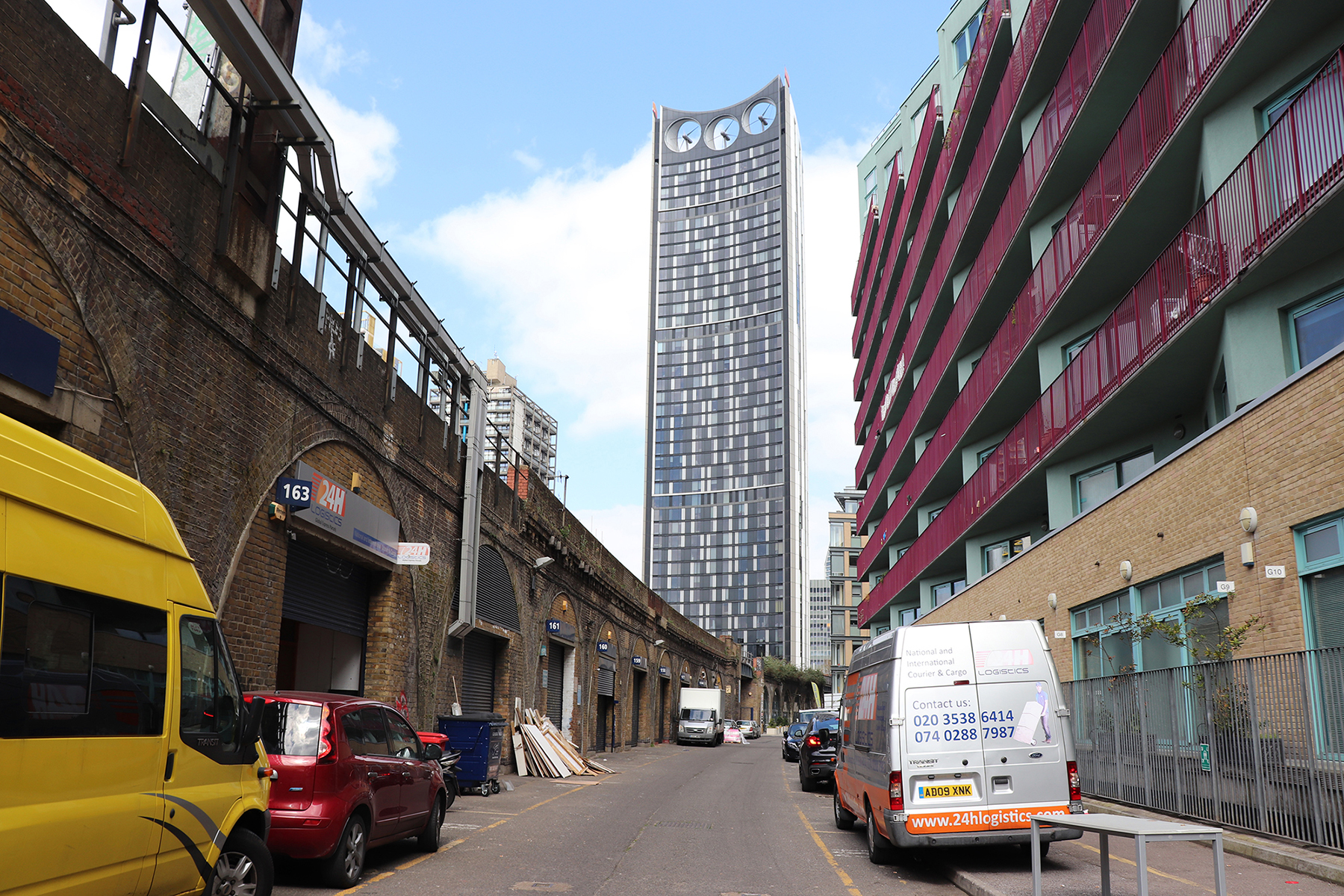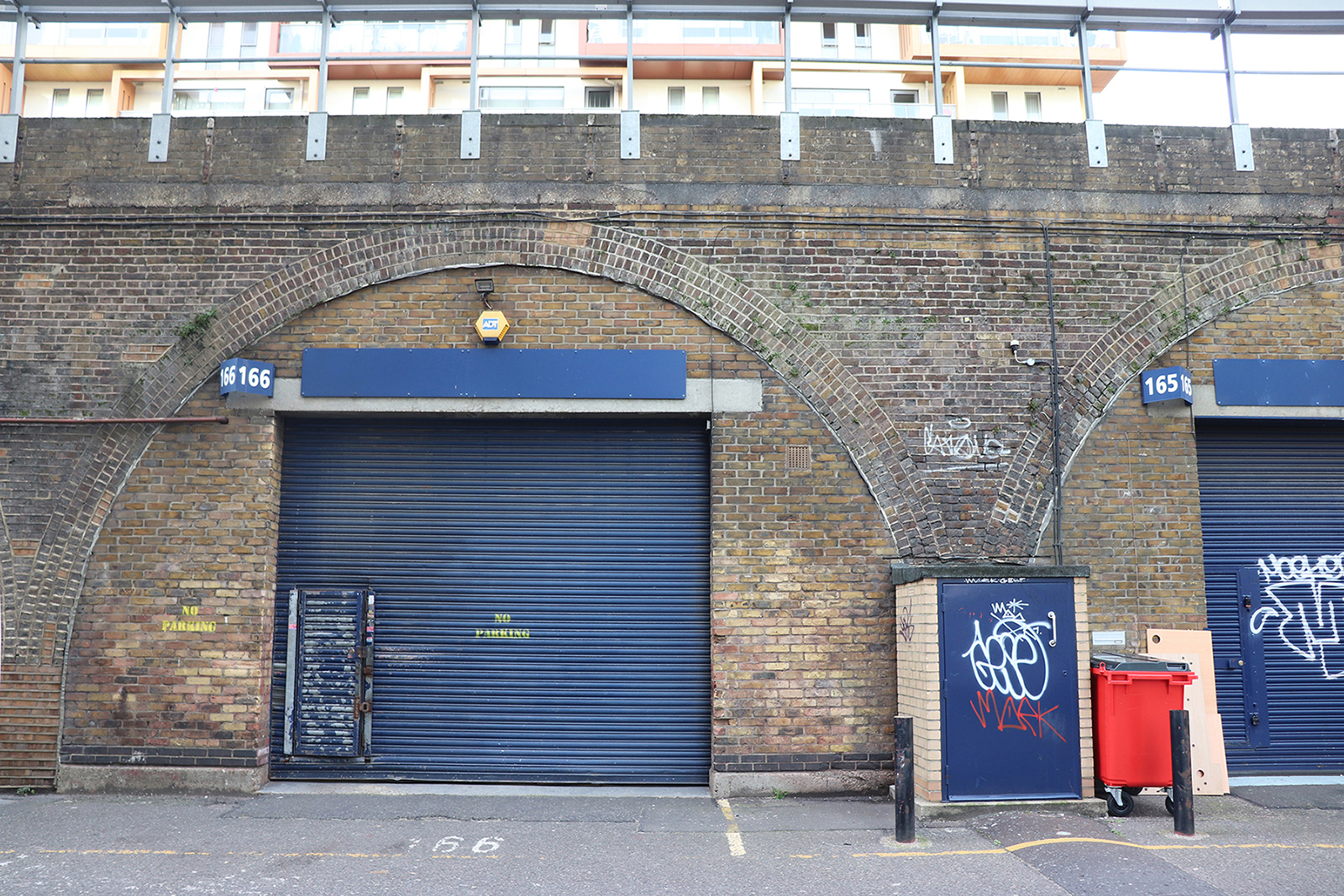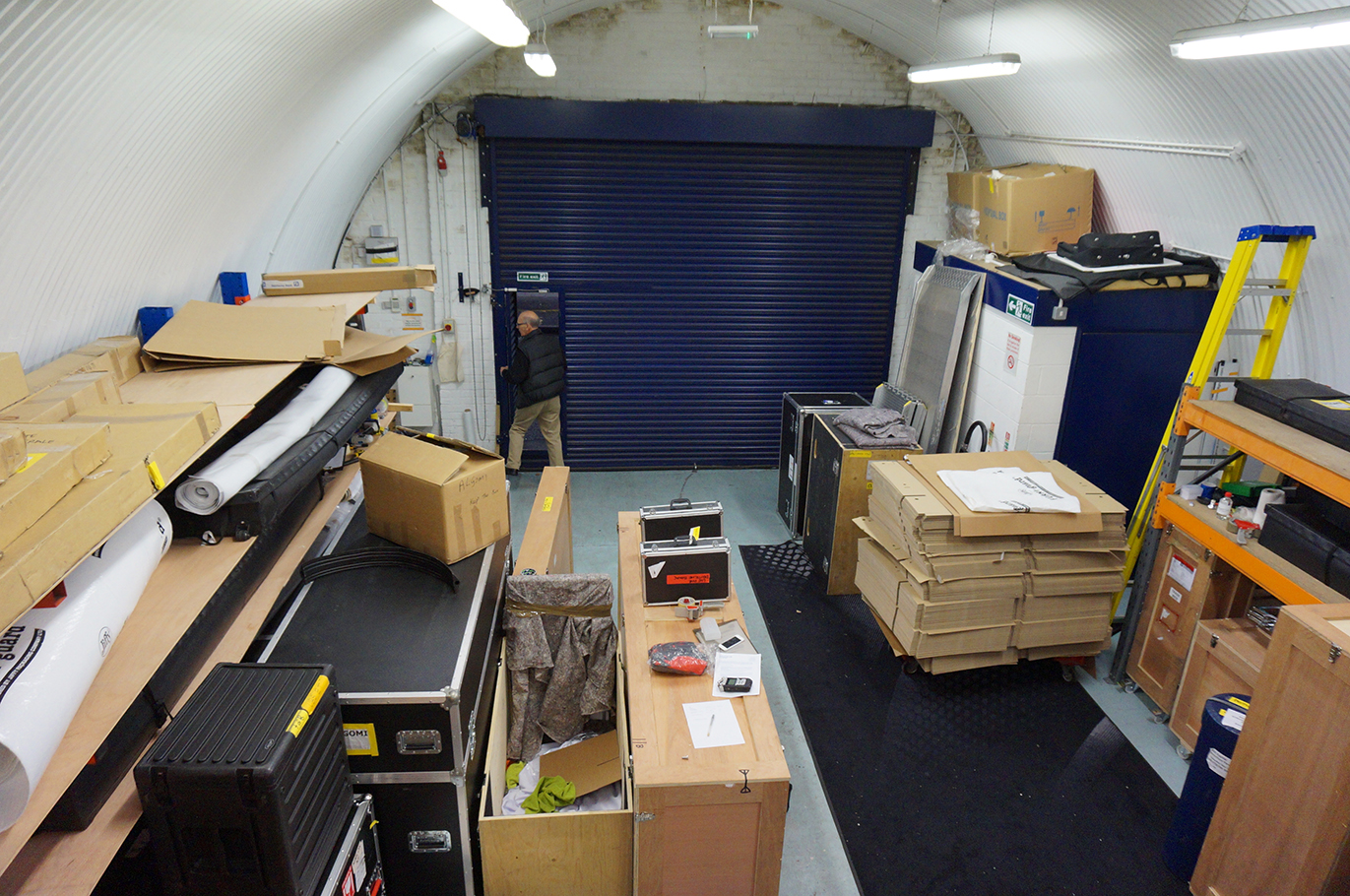Robert Dashwood Way
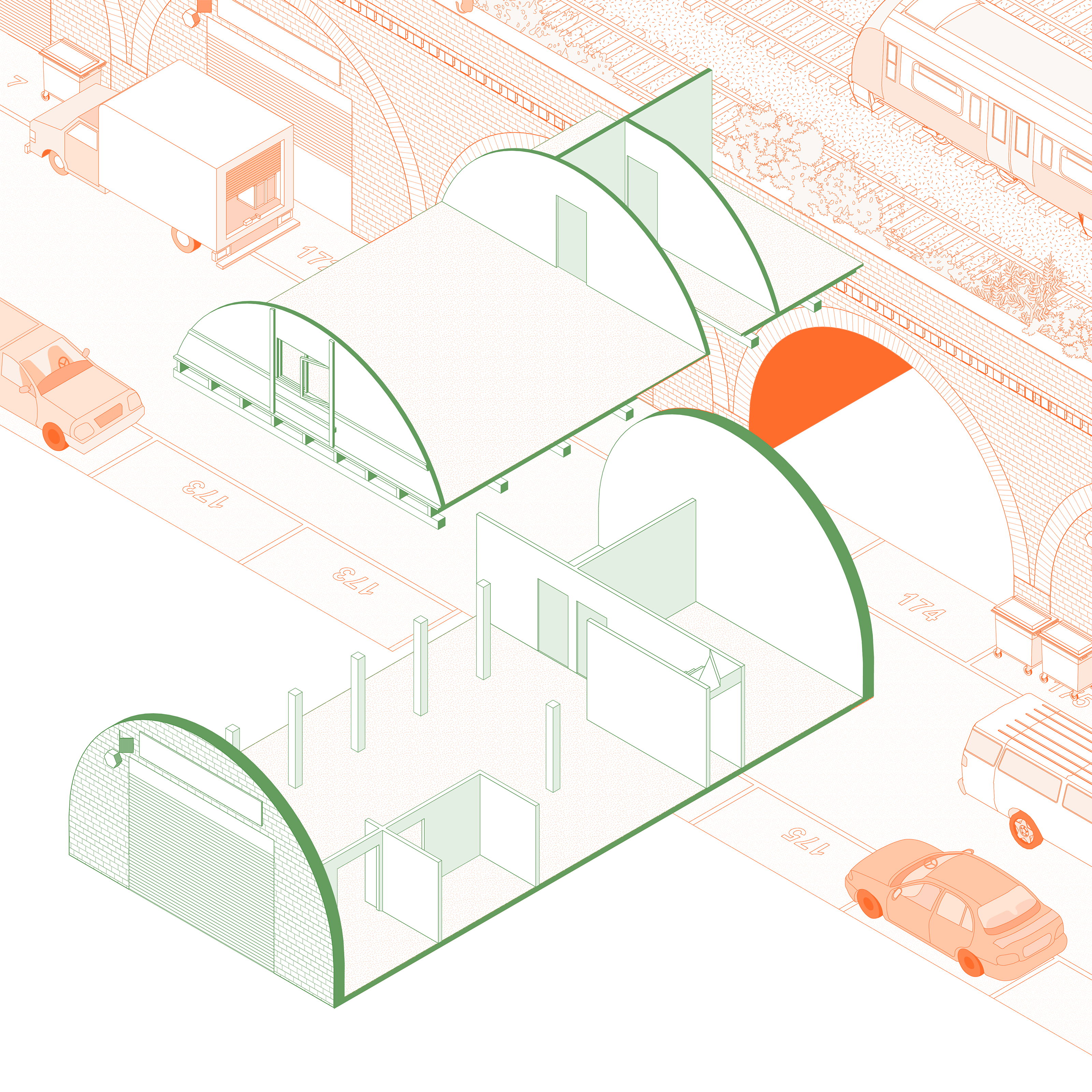
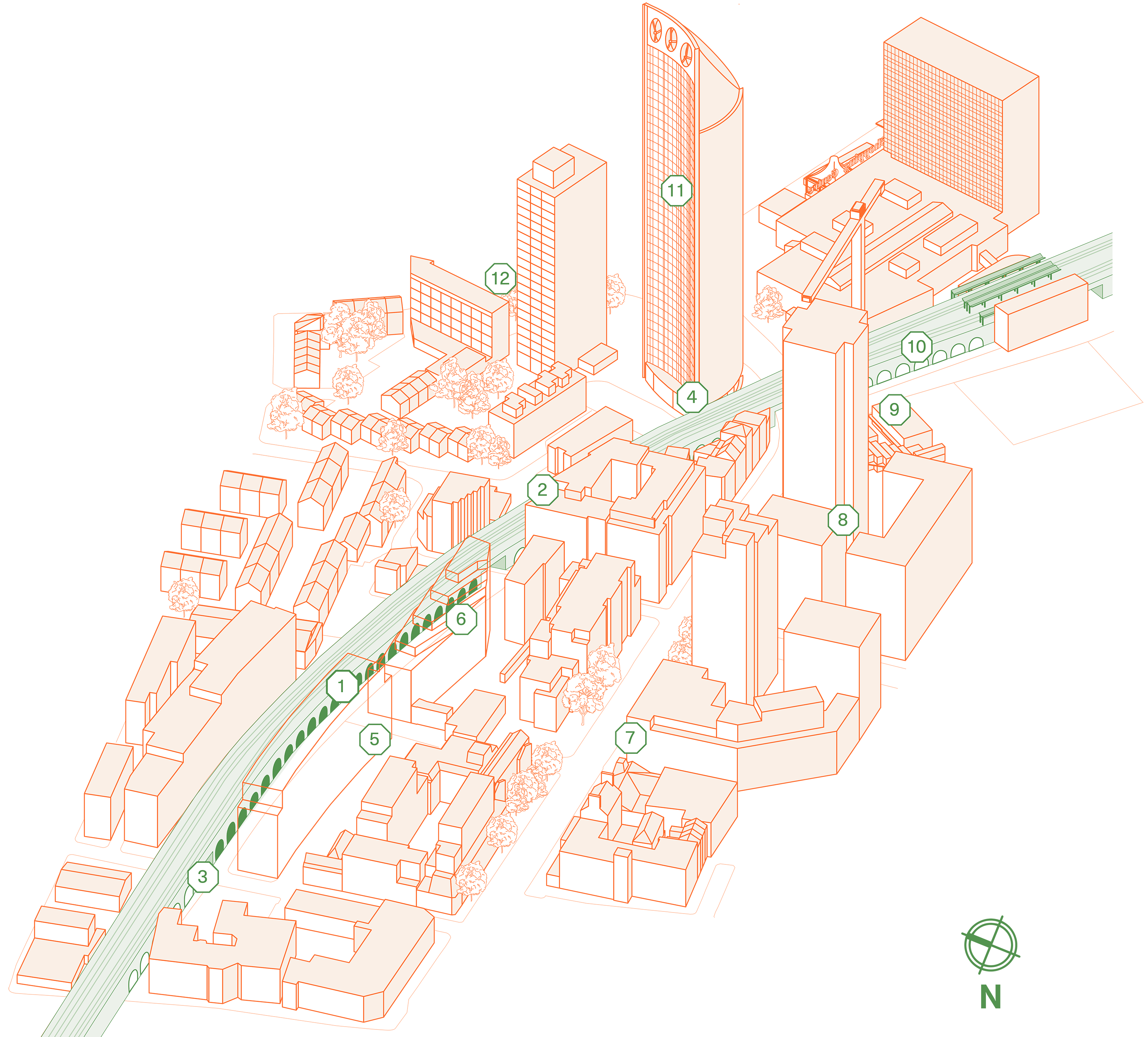
1/1
23
18
Network Rail
- B1 - Business
- B8 - Storage or distribution
- Secondary street
- Public
Key dates
1963
The London, Chatham and Dover Railway was built on a brick viaduct with a station at Elephant and Castle. The site adjacent to the railway was used as a coal depot for British Rail.
1970
HMSO printing works occupied the site. A street was created in-between the factory and the railway which operated as a business park. It was named after Sir Robert Dashwood a conservative politician born in 1662. The arches were predominately occupied by industrial and commercial businesses.
2005
Two large residential developments (South Central East, 2005 and The Printworks, 2007) were built on the vacant HMSO site causing tension between businesses in the arches and residents over noise, street congestion, privacy and rights to light.
Axonometric Drawing
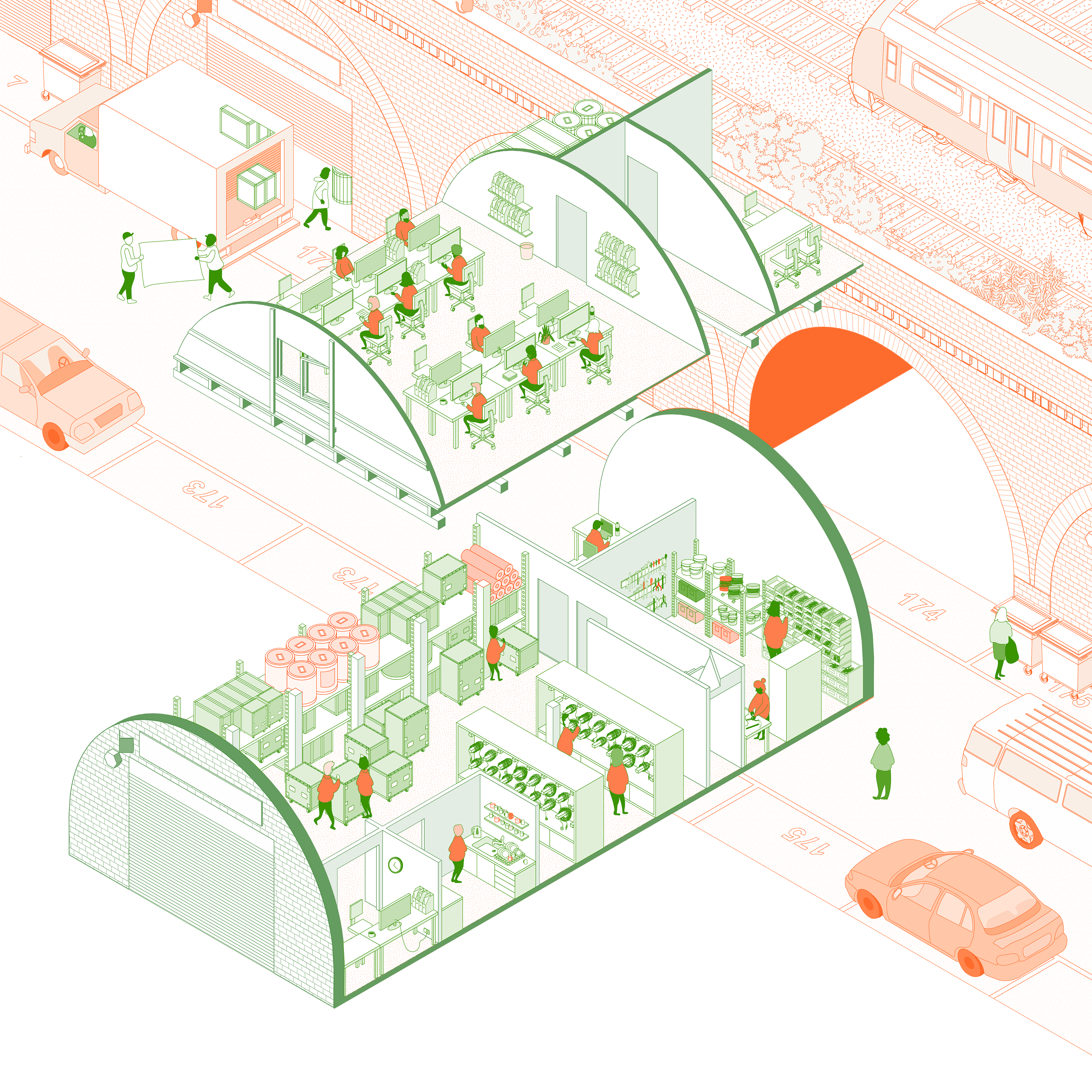
1/1
- Adding floor
- Subdividing
- Individual access
Operational Diagram
- Ownership
- Management
- Occupation
